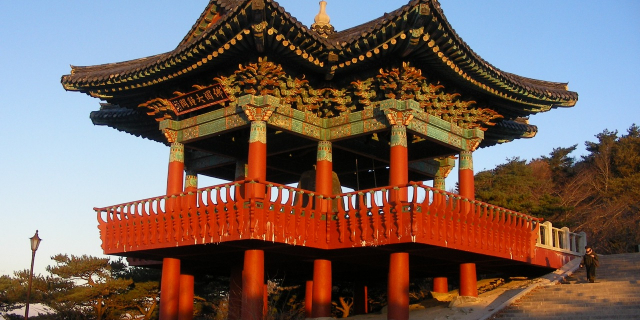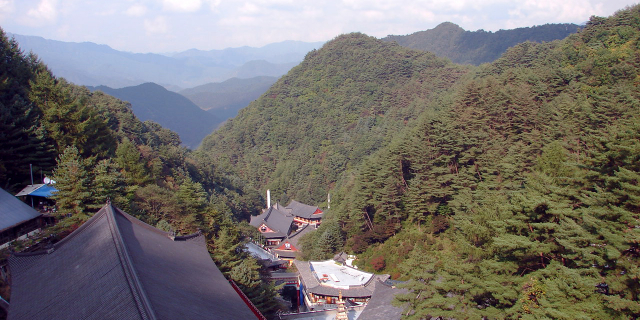Buseoksa Temple (Hangul: 부석사, Hanja: 浮石寺) is a Buddhist temple located near Mt. Bonghwang in Buseok-myeon, Yeongju City, Gyeongsangbuk-do, founded by the prominent scholar-monk Uisang in 676, the 16th year of Munmu of Silla. Buseoksa temple is also well known as the "Temple of the Floating Stone".
Korean Huayan school was highly celebrated here by the lectures of Uisang, who was later called the respected scholar of Buseok and later the school also gained the name Buseok school. The temple houses the Muryangsujeon, which is the second oldest standing wooden building in South Korea, re-constructed in 1376.
In 1372, large numbers of annexes were re-established by the great monk Won-eung at the time under King Gongmin's reign in 1376. A few buildings during Goryeo era (9th century to the late 14th century) remain until now, one of which is the main hall called Muryangsujeon located at the highest leve...Read more
Buseoksa Temple (Hangul: 부석사, Hanja: 浮石寺) is a Buddhist temple located near Mt. Bonghwang in Buseok-myeon, Yeongju City, Gyeongsangbuk-do, founded by the prominent scholar-monk Uisang in 676, the 16th year of Munmu of Silla. Buseoksa temple is also well known as the "Temple of the Floating Stone".
Korean Huayan school was highly celebrated here by the lectures of Uisang, who was later called the respected scholar of Buseok and later the school also gained the name Buseok school. The temple houses the Muryangsujeon, which is the second oldest standing wooden building in South Korea, re-constructed in 1376.
In 1372, large numbers of annexes were re-established by the great monk Won-eung at the time under King Gongmin's reign in 1376. A few buildings during Goryeo era (9th century to the late 14th century) remain until now, one of which is the main hall called Muryangsujeon located at the highest level, where Amitabha is enshrined.
In the era of Uisang were several conflicts among the norms of Buddhism. He would like to accomplish the harmonious values between denominations and among people in social context.[1] The conflicts were the impact of unification of Silla after a long war with Tang China. To harmonize subjected people, the royal power was required to establish the center of spiritual contents, one of which was to build the temples based on Uisang's Huayan school. In this way, each central area came to hold one Huayan temple in the end, leading to back off from chaotic social and political instability in the late 7th century.[2]
During Goryeo Dynasty, the temple was called as Seondal or Heunggyo temple. In 1916, stained paper was found to tell that Muryangsujeon building had been re-built in early years of Goryeo whereas there was arson of enemy in 1358. Muryangsujeon and Josadong shrine were built in 1376 and in 1377, respectively.



































Add new comment